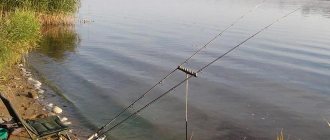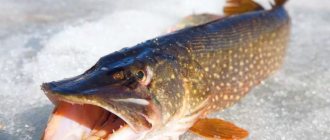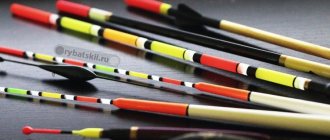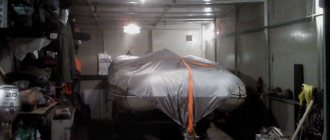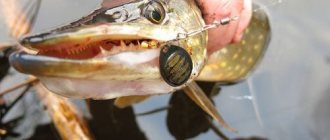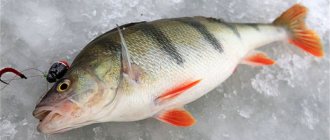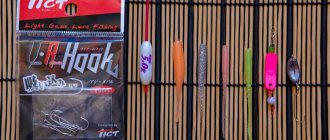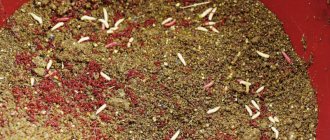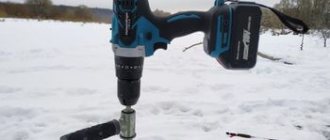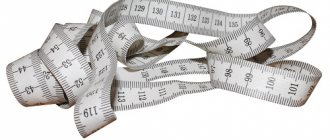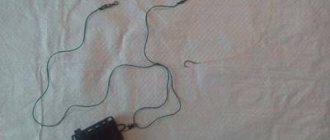Catching the coveted trophy on a feeder is not only very popular among fans of active recreation, but has also established itself as a fairly effective method of hunting. And to understand how to properly catch crucian carp and crucian carp on a feeder, you first need experience, and you will learn basic skills by reading the article. If you sort out different fishing gear, then fishing with a feeder is quite simple. In this case, the fishing object hooks itself, and the fisherman does not have to make any special efforts.
Types of feeders
In specialized retail outlets you can find feeders of different sizes and shapes. Taking into account the numerous observations of experienced fishermen, the configuration of the feeder does not affect the quality of fishing, since its direct purpose is to deliver the bait mixture to the target. The main thing is to use reliable gear, and the result will not be long in coming.
Among the positive qualities of catching fish on a feeder are:
- This is a self-cutting bottom tackle that allows you to fish with several rods at once. The equipment prevents the fish from swimming away with the bait.
- The feeder accurately delivers the bait to the fishing area.
- Provides casting range and makes it possible to fish at great depths.
- Increases the chances of catching in reservoirs not only with standing water, but also with strong currents.
- It does not cause any particular difficulties in application, even novice fishermen can do it.
- Thanks to the use of the spiral method in the manufacture of the device, the tackle does not get stuck in the muddy bottom.
- The degree of resistance of the fish is minimal.
Feeding mode - feeder in an aquarium
Aquarium fish are pets just like cats, hamsters or dogs. And every pet has its own separate place for eating. People unfamiliar with the aquarium world usually think that food is given to fish simply: poured anywhere. And some aquarists consider feeders to be pampering. But in fact, an aquarium feeder has many advantages. It allows you to train fish to feed not only in a separate place, but also at a specific time. And such a diet has a beneficial effect on their health and general well-being.
Lure
To improve the quality of fishing, it is advisable to use a specially prepared or purchased bait mixture. Effective types of complementary foods include:
- Maggots.
- Live worms.
- Boiled corn kernels.
- Chopped sunflower cake.
- White loaf pulp.
- A ready-made bait mixture intended for a specific type of aquatic life.
When using bait mixture, the following nuances should be taken into account:
- If a worm is added to complementary foods, it must be chopped into several parts.
- If fishing is carried out in a reservoir with a fast current, then two handfuls of worms are added to the mixture.
- If hunting is planned in bodies of water with an average flow of water, then the recommended proportion of worms is three handfuls.
- For fishing in slow currents, it is enough to put four handfuls.
- For fishing in reservoirs with standing water, you will need at least five handfuls of bait.
Baits and baits
Once you arrive at the pond, it is recommended to experiment with baits to choose the most effective option. The main thing you should know is that a moving bait will attract the attention of fish faster than a stationary bait. In bodies of water with a current, the bait can be activated using normal movements using a fishing thread.
The choice of bait when fishing on a feeder depends on the taste preferences of the fish in a particular body of water and the ability to stay on the tip of the hook.
It is recommended to use the following as catch bait for bottom tackle:
- canned corn kernels;
- earthworms;
- a bunch of maggots;
- hominy;
- mastyrka;
- grains of steamed pearl barley;
- shell - pearl barley;
- leeches;
- sandwiches made from corn and maggots;
- boilies.
How to choose?
When choosing an aquarium feeder, you need to focus on such an important point as the frequency of feeding the livestock. Modern automatic models can be programmed to dispense food three or more times a day. In addition, there are options that start “feeding” the fish only after a certain period of time. Therefore, if the owner is away from home for 6–8 hours, then a simple battery-powered electronic model would be the best option.
In case of a longer absence, you need to purchase feeders that operate on mains power and are capable of consistently dispensing food for two months. Such samples are equipped with a spacious container and are quite expensive.
If the owners are at home and have the opportunity to feed the fish themselves, then there is no point in purchasing an automatic feeder. You can limit yourself to a floating factory or homemade device.
Fishing technique
In order for fishing to be both a pleasure and have a significant result, it is necessary to take into account the recommendations of experienced fishermen, namely:
- An abundant amount of bait mixture in the feeder negatively affects the entire fishing process. After all, the task of a special device for feeding is to attract the object of fishing and keep it in a specific place for a long time, but in no case to feed the fish.
- For fishing in overgrown reservoirs, it is better to use a plastic device, since its working qualities allow you to avoid various snags and increase the ascent speed.
- To increase the likelihood of delivering the feeder to the selected fishing point, you can use a slingshot.
- The choice of feeder should be focused on the specific catch location and type of fish.
Place for feeding fish in the aquarium (placement of the feeder)
Continuing the analogy with people, we can say that fish do not feed just anywhere (restaurants and cafes do not count), but in a permanent place called a feeder. Fish get used to feeding in a certain place and at a certain time, which has a positive effect on their appearance, activity and beauty. In addition, they get used to certain sounds and movements that are associated with the feeding process. So, if every time before eating you slowly knock on the wall of the aquarium, you will see how after a few days the fish themselves will swim to the surface of the water, where the food is dumped, even before feeding begins. But in this article we don’t want to talk about this, but about what equipment is best to use for manual and automatic feeding. As a rule, the feeding place for fish is a selected place on the surface of the water, limited by a feeder. The feeder should be installed in the furthest corner from heating devices and bubbles from aeration in the aquarium. When feeding fish, it is better to turn off the aeration for a while, which will prevent the food from spreading or spilling out of it.
How to fish with a donka with a feeder
The process of fishing on a bottom tackle equipped with a feeder is as follows:
- First of all, a bait mixture adapted for a specific type of fish is mixed. The finished mixture should stand for 20 - 30 minutes, during which time each particle of food will have time to be completely saturated with water.
- During this time, the depth is measured at the fishing site. As a search engine, you can use either a special marker float, or using stepped wiring, or a modern gadget - an echo sounder.
- For starting feeding, a bottom fishing rod equipped with a suitable feeder is used. On average, it is necessary to make from 5 to 20 casts, it all depends on the volume of the feeder and the type of object being fished. There should not be too much complementary food; immediately after lowering the feeder to the bottom of the reservoir, it is necessary to make a quick and sharp hook. The signal of the device touching the bottom surface will be the tip of the rod, it will straighten. After pouring the bait mixture out of the feeder, the fishing thread should be wound.
- The immediate stage of fishing with a donk with a feeder begins after the starting feeding. The equipment for delivering complementary food to the fishing point is filled with the mixture and compacted with fingers. After casting the rig, the fishing rod must be placed on the stand. When the line is stretched, you should attach the bite alarm. After 10-15 minutes, it is recommended to re-throw the tackle.
- This method of hunting is characterized by self-hooking of the fish, this occurs immediately after the bite. Namely, the weight of the feeder and a sharp hook are the main points in a successful fishing outcome.
- If no bites are observed within one hour, it is necessary to look for the cause either in the complementary food itself or in the fishing area. After analyzing the situation and taking appropriate measures, you can continue fishing.
How to make it yourself
An alternative is a homemade fish feeder. Enthusiasts have come up with several working options. You can make such feeders for an aquarium with your own hands.
Bottle and smartphone
Simple method. The following items will be needed:
- bottle;
- narrow tape;
- phone with vibration mode.
An automatic aquarium feeder can be made in five steps:
- Cut the bottle in half.
- Turn the part of the bottle with the neck upside down.
- Leave a small gap between the cork and the neck. Secure the structure with tape.
- Fill the container with food. If some of them wake up, it’s okay.
- Place your charged phone there.
- Secure the tripod above the surface of the water. When you make a call, the vibration of the phone will cause grains of food to fall into the water.
In this way, you can provide your fish with food while away from home.
Using an alarm clock
This automatic feeder for an aquarium is more difficult to make with your own hands. You will need:
- plastic container with a lid (cup or container);
- tube with a diameter of 7–8 mm;
- small alarm clock.
It is made as follows:
- Make a hole in the container with a diameter of less than 8 mm.
- Insert a tube into the hole so that the inside does not touch the opposite wall of the container.
- Fill the container two-thirds full with dry food and close the lid.
- Remove the glass from the alarm clock.
- Place the resulting drum on the hour axis of the alarm clock and glue it to the arrow with tape. The hole should be from below twice a day at certain hours.
- The food pours out when the hour hand takes the desired position, moving along the dial.
How to catch carp on a feeder
Based on practice, it is effective to catch carp on a feeder when the water temperature in the reservoir is above 18 degrees. If you hunt for him in the autumn - winter period, when his activity level is on the decline, you are unlikely to get a good result. At this time, carp can be attracted not so much by a plentiful amount of food, but by specific smells and animal bait.
Procedure
- Prepare gear.
- Mix the bait mixture. Of course, you can make complementary foods at home, but it’s better when you come to the pond. While the mixture is moistened, stands are installed under the fishing rods, and everything unnecessary is removed from under the feet. The landing net is placed in a visible place.
- After 20 minutes, the mixture is checked for suitable consistency and, if necessary, adjusted by adding liquid or dry ingredients.
- The prepared complementary food is stuffed into the feeder, and the appropriate bait is placed on the hooks. For better camouflage, the hooks can be hidden in the bait mixture, or you can simply leave them hanging on the fishing line.
- After all the preparatory work, the equipped equipment is thrown into the selected point of the reservoir.
Having completed the cast, the rod must be placed on a stand and the fishing thread must be wound to a state of tension. To simplify the process of casting to a specific fishing spot, you can use a marker to make a mark on the fishing line: from the reel to the first throughput ring of the tackle. This will make it much easier to determine the exact distance. The next important point is setting up the bayrunner. Next, a bite alarm is installed.
In most cases, bites from powerful carp are sharp and confident, where there is a strong tension in the fishing thread or its complete sagging. Here it all depends on the direction of the fish, which side it will choose to leave with the bait. Self-cutting of the fished object is often observed; the main thing is to activate the baitrunner in time and begin the process of fishing.
When hunting for a large specimen, it is recommended to control the tension of the fishing line and not allow it to sag, otherwise the treasured trophy may come loose and fall off. Carp have a saw-toothed dorsal fin that easily cuts fishing line. If there are thickets of grass and bushes on the coastal zone of the reservoir, then the carp must be tired in clean water. After reducing the level of resistance of the individual, you can move on to landing fish on the shore. The landing net in this case is more relevant than ever.
Catching one of the brightest representatives of the carp family on a feeder is both effective and simple, and the tackle for such purposes does not have to be branded and expensive. The main thing is that it is durable, reliable and properly equipped. You can attract strong and cunning fish only with aromatic bait and appetizing bait.
Floating feeders for aquarium
As such, you can no longer find a feeder that floats freely (hence the name) on the surface of the aquarium. We have already mentioned that fish organize feeding places, i.e. The feeders are fixed in a certain place using suction cups. But, nevertheless, historically they continue to be called that. Floating feeders are enclosing structures made of plastic that float well on the water. Usually dry food is poured into them, but if you insert a mesh, the fish can also be fed with live food. However, having solved one problem - reducing the clogging of the aquarium with leftover food, since the feeder is in one place - we encountered another problem. Unfortunately, water is subject to evaporation. And no matter how we close the aquarium, the water in it decreases, and sometimes at a fairly rapid pace. What does this mean for the feeder? Since the feeder is attached to a suction cup, due to a decrease in the water level, it first tilts, and eventually, when the water level drops below it and completely stops holding the food in one place, it spreads out throughout the aquarium. The point of such a feeder is lost. The way out of this situation seems to be the purchase of a feeder with a guide along which the feeder slides along with the decreasing or rising water. An example of such a feeder is shown in the photo.
... or a feeder with a rotating rod, which changes its angle depending on the water level in the aquarium.
Another type of floating feeder is a feeder with a removable lattice cone for feeding fish with live food. Here we are not in danger of a decrease in the water level, since the cone is always in the water and accessible to fish.
Summarize. Firstly, choose a multifunctional feeder so that the fish can be fed with dry and live food, that is, with a removable mesh or cone. Secondly, choose a feeder that moves according to the water level in the aquarium. I would also like to say that you should not overdo it with feeding. It is better to throw less food than more in relation to how much the fish can eat. How much feed should I throw? This will come to you with time, that is, with experience.
How to catch crucian carp on a feeder
Hunting for crucian carp is more effective in the early morning and late evening. Although bites do occur in the middle of the day, this is rather random.
After a promising fishing location has been selected, it is necessary to prepare complementary foods. For fishing from the shore, the place is fed by hand: small balls are formed from the bait mixture and thrown into the water. If you plan to fish at a great distance from the shore, then it is advisable to use a bait feeder.
Procedure
- Feed the fishing area. To lure wary crucian carp, home-made complementary foods and a purchased version of the mixture are used.
- Fill the feeder. To increase the chances of a high-quality catch, you can add live ingredients (worms, maggots, bloodworms) to the bait mixture.
- Place your favorite treat on the hook.
- Throw the feeder at the fishing point. It is better to do this in the same place where the bait balls were thrown.
The crucian carp bites quite accurately, its bites are barely noticeable. Here you need to be extremely careful not to miss them. After several careful pulls, a stronger pull will definitely occur, which will be the signal for hooking.
It happens that there are no bites for a long time, in such cases it is worth experimenting with bait.
You can also use a special feeder called “crucian and carp killer” for catching crucian carp and crucian carp. Fishing with a feeder is highly effective and does not require special skills from the fisherman, which even a beginner can do.
